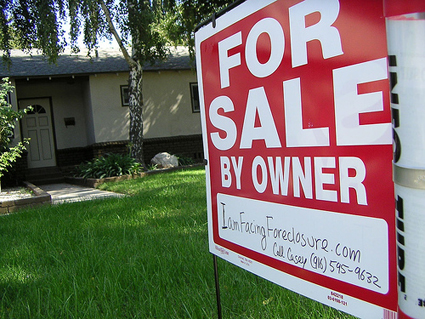 When I started freelancing, I thought I’d reached the pinnacle of worker freedom.
When I started freelancing, I thought I’d reached the pinnacle of worker freedom.
Every morning I pour a cup of coffee, pull on a warm fuzzy pair of slippers, and plod into my home office.
I watch commuters battle the busy streets while I wear pajamas at my desk.
I thought this was the goal. But it’s only the starting line.
Sure, I work for myself. But I still trade my time for money. I write for magazines and websites; I don’t own those magazines or websites.
Freelancers enjoy freedom; people with traditional jobs enjoy security and benefits. Yet we share a common shortcoming: We aren’t the owners. We have income, but no assets.
At least, not yet.
This idea has been kicking around in my head for a few months, but it gelled this week after I read Cashflow Quadrant by Robert Kiyosaki, the bestselling author of the Rich Dad, Poor Dad series.
It’s an old-school book – at several points, the author advises people to “listen to cassette tapes” – but if you can overlook the obvious 1990’s references, the wisdom in this book is classic.
Kiyosaki classifies people into four groups: employees, the self-employed, business owners and investors. Listen to a person’s words, he says, and you’ll have a window into which mindset they hold:
The employee says: “I’m looking for a job with good pay and excellent benefits.”
The self-employed says: “My rate is $35 an hour” or “I charge a 6 percent commission.”
The business owner says: “I need to hire a President who will run my company.”
The investor says: “My team will study the valuation of that company.”
Loads of people – myself included – operate in multiple roles. Most of my income comes from my self-employment, but I play the role of an investor as I foray into real estate.
Your mindset matters more than the current source of your income. What kind of mentality do you have: an employee mindset or an entrepreneur mindset?
That’s why none of Kiyosaki’s books contain how-to information. Instead, they’re conceptual guides on the psychology of ownership, freedom and wealth.
What is Wealth, Anyway?
In this book, Kiyosaki defines “wealth” as “the number of days you can survive without working … and still maintain your standard of living.”
“Wealth is measured in time, not dollars,” he says.
If your expenses are $2,000 per month, and you have savings of $10,000, your wealth amounts to 5 months.
Your goal, therefore, is to create a lifetime of self-sustaining wealth.
Seven Levels of Investors
Since many people benefit from self-exploration, Kiyosaki outlines the “7 levels of investors.” Which one are you?
Level 0: You have nothing to invest, because you spend everything you earn.

Level 1: You borrow money to afford your lifestyle. If you invest, you do it with borrowed money. Many outwardly-rich people fall into this category.
Level 2: You’re a saver. You put money into “safe” vehicles like savings accounts, CDs and money-market accounts. You save for the sake of later consumption (i.e. saving for a vacation or a house) rather than saving to invest.
Level 3: You participate in the company 401(k) plan and you might even have a non-retirement mutual fund or two. But you also say things like “I don’t have time to learn about investing,” or “I’ll leave it to a professional.”
Some Level 3 investors read the Wall Street Journal, buy a stock based on a “hot tip”, and think that they’re a player in the game. They name-drop — “my brother at Merrill Lynch says …” – so they can feel like a bigger player. But deep down, they’re following the crowd.
Level 4: You have a long-term plan or idea. You invest in tax-advantaged ways and take advantage of dollar-cost averaging. You have minimal debt and admire Warren Buffet.
According to The Millionaire Next Door by Thomas Stanley and William Danko, most self-made millionaires are Level 4 investors: they own a business, drive a used car and invest in tax-advantaged ways for the long-term.
Level 5: You have a solid financial foundation, so now you pursue bigger, more aggressive investments. You focus your investments in a few areas in which you’re highly knowledgeable – perhaps you own a shopping center or a 40-unit condominium building. You have a formal or informal team of coaches, mentors and advisors that you use as a sounding board.
Level 6: You are among “the Kennedys, Rockefellers, Fords, Gettys and Perots.” You create the stocks that other investors buy.
What Does This Mean?
This leads to one conclusion: Self-employment is great, but not needing employment (self or otherwise) is the true goal.
Freedom isn’t “being your own boss” — its the ability to fire any boss, including yourself. You can choose to work, but you’re not forced to trade time for dollars. Work is optional.
You create this through owning investments, such as stocks, real estate or businesses. These investments should generate cash flow, or passive income, that you can live on. The asset, or principal stays untouched; you live on the dividends and income.
Challenge accepted.
________
{UPDATE 2016: I wrote this blog post in 2011. It feels surreal. Today, my real estate investments create enough passive cash flow to cover my bills.
I can sustain my current standard of living indefinitely, through my investment income alone. I disclose my cash flow to share my performance and lessons with the world.
Looking back at my 2011 articles reminds me of how far a person can come in five years. I hope this motivates you to build assets, whether they be stocks, real estate or businesses. I hope you take action. And I can’t wait to see what you accomplish in the next five years.}